Offshore: Physical
This page looks at:
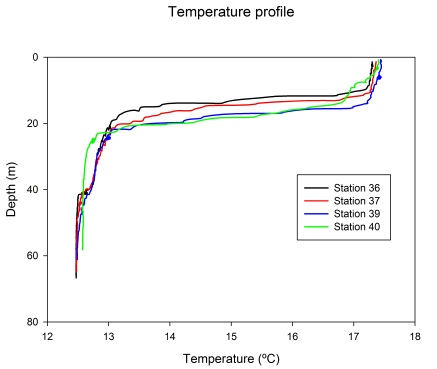
Figure 1: Temperature vs Depth for all stations
Figure 1 shows the temperature depth profile from all stations offshore. According
to the figure you can see a thermocline at all stations, which is expected since
in the summer the longer exposure to the sunlight and the warmer temperature increases
the surface temperature, creating a stratified water column. While in the winter
the water column is expected to be well-
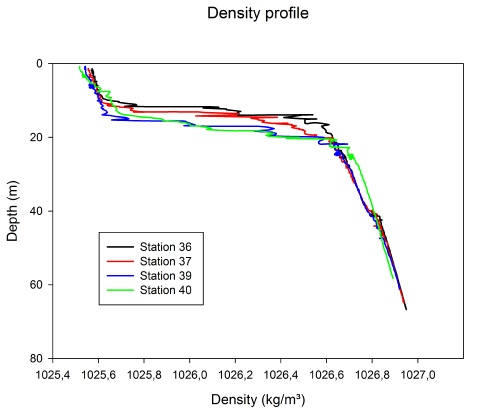
Figure 2: Density vs Depth for all stations
This density depth profile shows a pycnocline at the same depth as the thermocline seen in figure 2, however there is an inverse relationship with the temperature. This was expected since the water is stratified due to the warmer temperatures in summer.
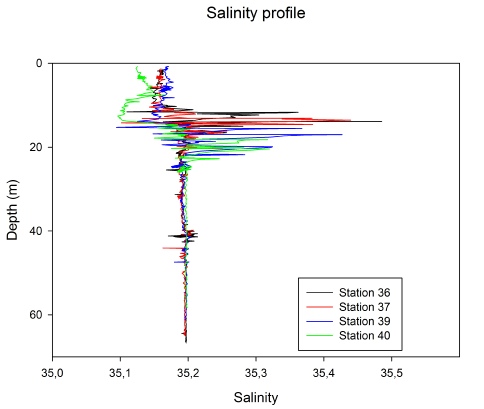
Figure 3: Salinity vs Depth for all stations
The salinity profile (figure 3) shows spikes as a result of the time lag of temperature measurement and conductivity. It is not possible to make a full analysis of the salinity with this graph alone, however after the depth of about 30 meters the graph tends to stabilize and it is noticeable that overall all the stations shows similar salinity.
The attenuation coefficient was calculated using the formula k*D=1.46 (Holmes, 1970) (table 1), where k is light attenuation coefficient and D is the secchi disk depth. Euphotic zone was calculated as three times the secchi disk depth.
The water visibility can be affected by both water turbidity and weather (cloud coverage). In the ocean, it is expected to have clear water with less turbidity than those in the estuary. Due to that, the values of Secchi disk depth are more influenced by the weather than the water turbidity. It is possible to observe in table 1 that higher secchi disk depth was obtained in stations with less cloud coverage and consequently deeper euphotic zones as well.
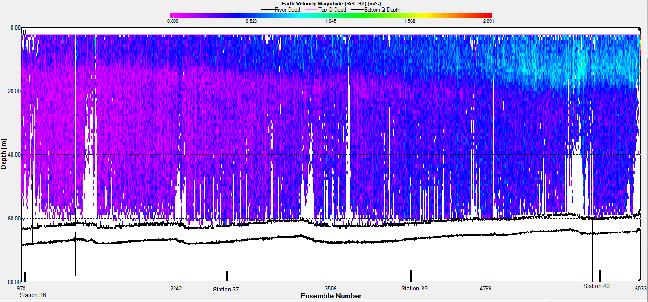
Overall the water velocity shows a similar pattern in all transects (figure 5), with a faster water mass in the surface above the slower water mass observed below. However, in the last two transects the velocity of both masses increases, but still presenting the same pattern of a faster mass in the surface.
Figure 4: Velocity obtained by ADCP between stations 36 and 40.
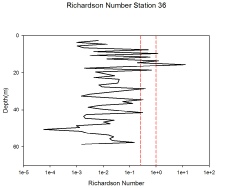
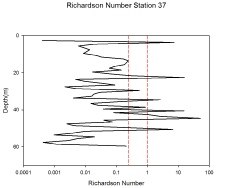
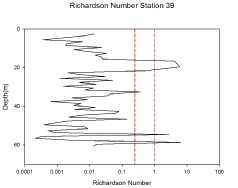
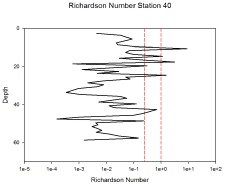
Assuming values found above 1 are laminar (Abarbanel et al, 1984) and below 0.25 are turbulent (Miles, 1961), these are represented as red lines in figures 5, 6, 7 and 8. It is possible to observe in the figures that there is a predominance of turbulent flow. In all stations it is noticeable some peaks of laminar flow around depth 15 to 20 meters.
References:
Abarbanel, H. D., D. D. Holm, J. E. Marsden, and T. Ratiu, (1984). Richardson number
criterion for the nonlinear stability of three-
Holmes, R. W. (1970). The Secchi disc in turbid coastal waters. Limnology and Oceanography,
15, 688-
Miles, J. W., (1961). On the stability of heterogeneous shear flows. J. Fluid Mech., 10, 496–508.
Falmouth, 2014